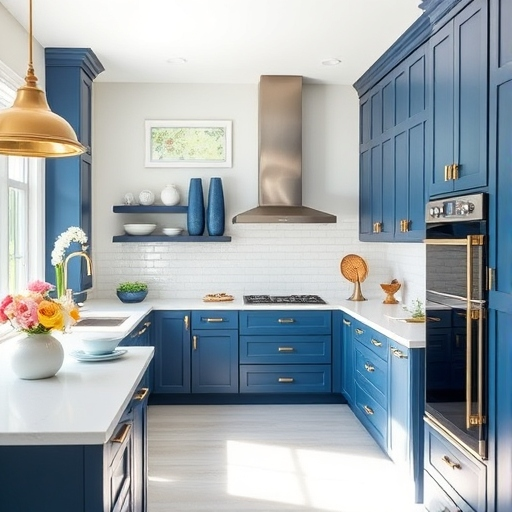
Kitchen Lighting Ideas: How to Master Layered Lighting Design for Your Space
Lighting can make or break the functionality and ambiance of your kitchen. Whether you’re remodeling or simply looking to refresh your space, kitchen lighting ideas like layered lighting design, task lighting, and understanding the differences between ambient vs accent lighting can transform your cooking area into a versatile, welcoming hub. Here’s how to layer kitchen lighting effectively to bring both form and function to your kitchen.
What Is Layered Lighting Design?
Layered lighting design involves combining multiple light sources to serve different purposes in a space. In the kitchen, this often means:
- Ambient Lighting — The main source of light, usually from ceiling fixtures or recessed lights, that illuminates the entire room.
- Task Lighting — Focused light for specific activities like chopping, cooking, or reading recipes.
- Accent Lighting — Decorative lighting that highlights design features, such as cabinets, backsplash, or architectural elements.
How Do You Layer Kitchen Lighting?
To layer kitchen lighting, combine ambient, task, and accent lighting. Use recessed ceiling lights for general illumination, under-cabinet lighting for tasks, and pendant lights or LED strips to highlight architectural details. Each layer serves a purpose, creating a functional and visually appealing kitchen.
Why Layering Kitchen Lighting Matters
A well-lit kitchen is more than just practical; it sets the tone for the entire space. With layered lighting, you’ll achieve:
- Enhanced Functionality: Each task becomes easier and safer, from slicing vegetables to washing dishes.
- Versatility: Adjust lighting based on the time of day or activity.
- Aesthetic Appeal: Highlight the beauty of your cabinetry, countertops, and decor.
Benefits of a Layered Lighting Design
| Lighting Type | Purpose | Example |
|---|---|---|
| Ambient Lighting | General illumination | Ceiling-mounted fixtures |
| Task Lighting | Focused light for activities | Under-cabinet LED lights |
| Accent Lighting | Adds drama and highlights details | Pendant lights over the island |
Step-by-Step Guide to Layering Kitchen Lighting
1. Start with Ambient Lighting
- Install recessed lights or a central ceiling fixture for even illumination.
- Consider dimmer switches to control the intensity based on your needs.
2. Add Task Lighting for Specific Areas
- Use under-cabinet lights for food prep zones.
- Incorporate adjustable LED strips for maximum flexibility.
- Highlight your sink area with a focused spotlight or pendant light.
3. Incorporate Accent Lighting
- Install pendant lights over your kitchen island to create a focal point.
- Use cabinet lighting to showcase glass-front cupboards or open shelving.
- Add toe-kick lighting beneath lower cabinets for subtle elegance.
4. Choose the Right Bulbs
- Color Temperature: Warm white (2700K–3000K) for a cozy feel, cool white (3500K–4000K) for a modern look.
- Brightness: Aim for a mix of lumens suitable for ambient (2,700–4,000 lumens) and task lighting (4,000–6,000 lumens).
Ambient vs Accent Lighting: What’s the Difference?
| Feature | Ambient Lighting | Accent Lighting |
|---|---|---|
| Purpose | Overall room illumination | Highlighting specific features |
| Fixture Types | Ceiling lights, chandeliers | Wall sconces, LED strips |
| Effect | Broad, functional light | Adds depth and visual interest |
Tips for Choosing Fixtures
- Pendant Lights: Perfect for islands or dining areas. Choose ones with adjustable heights.
- Under-Cabinet Lighting: Opt for energy-efficient LEDs for long-lasting, bright light.
- Recessed Lights: Go for adjustable trims to direct light where needed.
FAQs
How can I light a small kitchen effectively?
Use a mix of recessed lights for ambient lighting, under-cabinet LEDs for tasks, and reflective surfaces like glass to amplify light.
What’s the best light color for a kitchen?
Choose cool white for a modern, bright look or warm white for a cozy, inviting atmosphere.
Should I use dimmers in the kitchen?
Yes! Dimmers let you control light intensity for different times of day and activities.
What’s the most energy-efficient lighting for kitchens?
LED lights are the most efficient, lasting longer and using less electricity compared to other options.
Conclusion
By mastering layered lighting design, you’ll create a kitchen that’s both functional and stylish. Use ambient lighting for overall brightness, task lighting for precision, and accent lighting for personality. Ready to transform your space? Start with these kitchen lighting ideas and make your cooking area truly shine!
Key Takeaways
- Layer kitchen lighting with ambient, task, and accent lighting for a functional and beautiful space.
- Use dimmers to adjust lighting based on the time of day.
- LED lights are energy-efficient and versatile for every layer of lighting.





